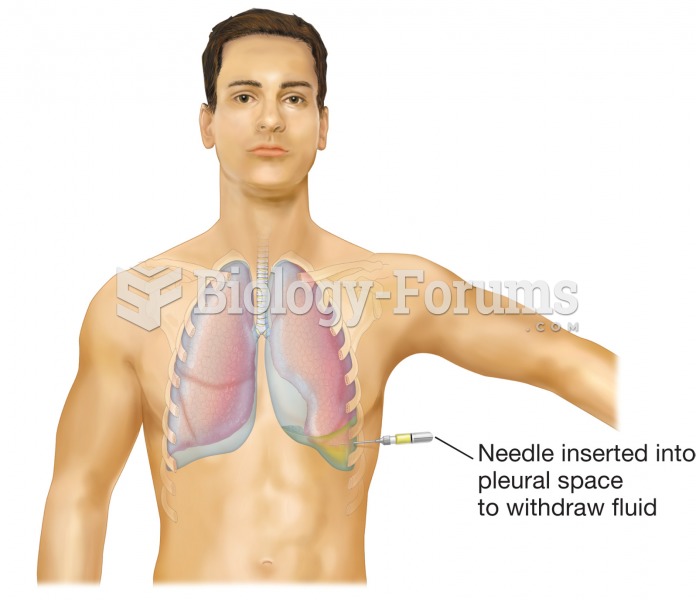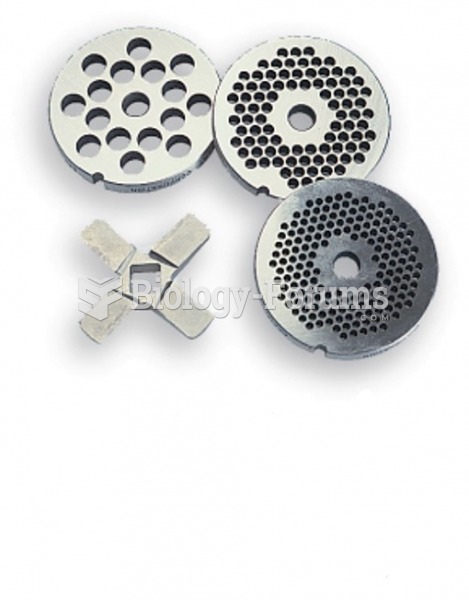|
|
|
Interferon was scarce and expensive until 1980, when the interferon gene was inserted into bacteria using recombinant DNA technology, allowing for mass cultivation and purification from bacterial cultures.
Certain chemicals, after ingestion, can be converted by the body into cyanide. Most of these chemicals have been removed from the market, but some old nail polish remover, solvents, and plastics manufacturing solutions can contain these substances.
The people with the highest levels of LDL are Mexican American males and non-Hispanic black females.
Though “Krazy Glue” or “Super Glue” has the ability to seal small wounds, it is not recommended for this purpose since it contains many substances that should not enter the body through the skin, and may be harmful.
According to the CDC, approximately 31.7% of the U.S. population has high low-density lipoprotein (LDL) or "bad cholesterol" levels.
 Thoracentesis. A needle is inserted between the ribs to withdraw fluid from the pleural sac at the b
Thoracentesis. A needle is inserted between the ribs to withdraw fluid from the pleural sac at the b
 The blue sticker on the rear of this vehicle indicates that it is designed to use compressed natural ...
The blue sticker on the rear of this vehicle indicates that it is designed to use compressed natural ...
 A gasoline direct-injection system injects fuel under high pressure directly into the combustion ...
A gasoline direct-injection system injects fuel under high pressure directly into the combustion ...




